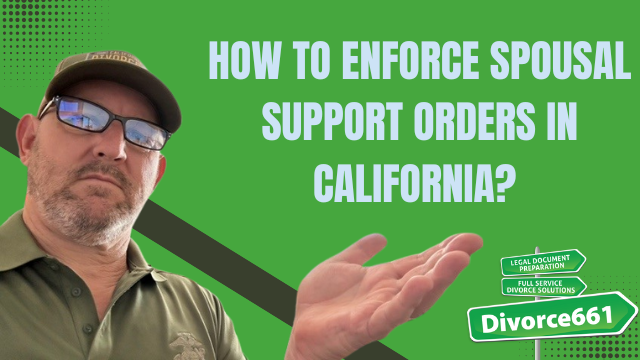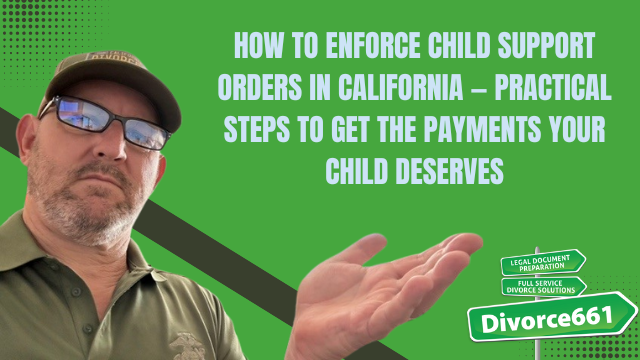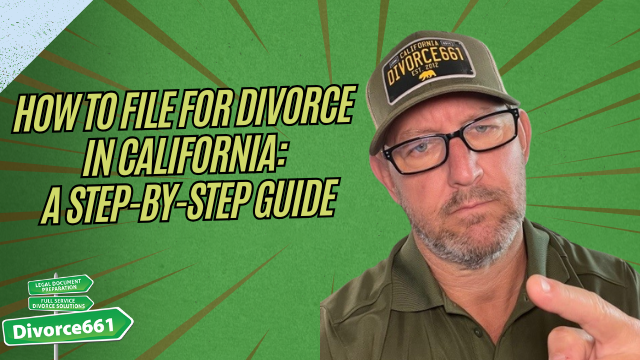How to Handle Retirement Accounts in a California Divorce
Introduction
In my video “How to Handle Retirement Accounts in a California Divorce,” I walk through a common but costly misunderstanding couples face when dividing retirement assets. I’m Tim Blankenship of Divorce661, and I explain why retirement earned during marriage is community property—but why that alone doesn’t solve the problem. This article breaks down what you need to know about 401(k)s, pensions, IRAs, and the crucial role of a QDRO so you can protect your retirement and avoid unnecessary tax penalties.
Why retirement accounts are different
Retirement accounts earned during marriage are generally community property in California, which means they are usually split 50/50. That seems simple on the surface, but retirement plans are governed by federal rules and plan documents. Simply stating in your divorce paperwork that each spouse gets half is not always enough to accomplish a clean, legal transfer of funds.
Common pitfalls
- Assuming a written agreement is sufficient without plan-level approval.
- Failing to use the appropriate legal order to direct the plan administrator.
- Triggering taxes and penalties by taking improper withdrawals or transfers.
- Delays and rejections when plan administrators don’t receive the correct paperwork.
What is a QDRO and when do you need one?
QDRO stands for Qualified Domestic Relations Order. It’s a specific court order that tells an ERISA-qualified retirement plan (like a 401(k) or many pensions) how to pay a participant’s benefits to an alternate payee—typically the ex-spouse—without treating the distribution as a taxable event for the plan participant at the time of transfer.
“You can’t just ‘agree to divide it’ in your paperwork.”
That line is important. If you try to divide an ERISA plan without a QDRO, you risk tax penalties, early withdrawal penalties, and administrative headaches. A QDRO is often required to legally and safely split employer-sponsored retirement accounts.
Which accounts need a QDRO?
- Requires a QDRO: Most employer-sponsored, ERISA-qualified plans—401(k)s, 403(b)s, many pensions.
- Do not use a QDRO: IRAs and Roth IRAs are not ERISA plans and therefore are not subject to QDROs. They can usually be divided via a transfer incident to divorce or through other court orders without a QDRO.
Real-life example
Recently, a couple agreed to split a pension and a 401(k). They assumed their settlement language in the judgment was enough. It wasn’t. We drafted the correct QDRO language into their judgment and worked with a QDRO attorney to produce an order that the plan administrators accepted. Because we handled it correctly up front, the funds were allocated properly without tax penalties or delays.
How we handle retirement division at Divorce661
Our goal is to make sure your retirement division is done right the first time. Here’s how we help:
- We include proper QDRO language in your divorce paperwork when needed.
- We identify which accounts require a QDRO and which do not (for example, IRAs).
- We refer clients to trusted QDRO professionals and attorneys when plan-specific drafting is required.
- We coordinate with plan administrators and QDRO attorneys to get approvals and process distributions smoothly.
Practical steps to protect your retirement in a California divorce
- Inventory all retirement accounts (401(k), 403(b), pension, IRA, Roth IRA).
- Determine whether each account is community or separate property based on when it was earned.
- Identify which plans are ERISA-qualified and therefore likely to require a QDRO.
- Include clear QDRO language in your divorce judgment or settlement agreement.
- Work with a QDRO attorney when the plan requires specific wording or calculations.
- Submit the QDRO to the plan administrator for approval and processing.
- Confirm the transfer or payout was completed and that tax reporting is correct.
Quick checklist before you sign anything
- Does your settlement mention the retirement account by plan name and account number?
- Does it state the exact share or calculation method to be awarded?
- Does it direct the preparation and submission of a QDRO (when applicable)?
- Have you contacted the plan administrator to confirm their QDRO procedures?
- Have you consulted or been referred to a QDRO specialist if needed?
Why this matters
Small mistakes in the wording or process can cost thousands in taxes and penalties, or cause long delays in getting the funds you’re entitled to. Properly drafted and approved QDROs protect both parties and ensure the plan administrator executes the division as intended.
Conclusion and next steps
Dividing retirement accounts in a California divorce involves more than agreeing to split assets. Understanding whether an account is community property, knowing which plans require a QDRO, and taking the proper legal steps will save you time, money, and stress.
If you’re facing this issue, take the first step now: review your retirement accounts, confirm whether a QDRO is required, and get the right paperwork in place. At Divorce661, we include the correct QDRO language in settlements and can connect you with experienced QDRO professionals when necessary. Visit Divorce661.com to schedule a free consultation and make sure your retirement division is done correctly the first time.










